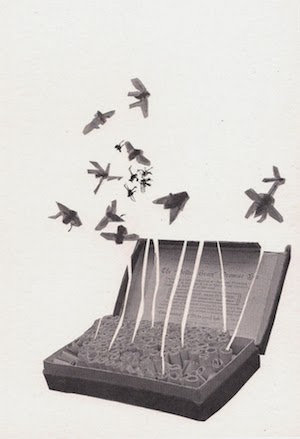I was surprised to find the chimera alive
and well in Fort Collins, Colorado - appearing in various guises in
the work of Mary-Ann Kokoska and students.
On returning from the trip, it was time to finish a series of 7’ drawings, for the next phase of my own chimerical project.
The drawings will be on display in November and December at Swansea Museum Collections Centre (open every Wednesday). You can also meet me on site between 10.00 am and 4.00 pm on Friday 14th November.
Please ring for appointment to view at othe times: 01792 467282
The drawings will be on display in November and December at Swansea Museum Collections Centre (open every Wednesday). You can also meet me on site between 10.00 am and 4.00 pm on Friday 14th November.
Please ring for appointment to view at othe times: 01792 467282
Originally part of the Morfa Copper Works site, the Swansea Collection Centre is now a marvelously eclectic treasure trove of material relating to a huge variety of subject matters, both land-based and maritime, natural and man-made.
It was exciting to work with Katy Williams, Collections Technical Officer and Huw Davey, Collections Technician, in placing my drawings - making the most of all their knowledge and experience of what works best in the Collection Centre.
photo courtesy SMCC
In the Collection Centre, objects of vastly different form and function rub up against one another as if haphazardly, and I wanted to capture something of the way the strangeness of these juxtapositions seems at once to intensify the visual presence of the objects and to suggest shadowy new possibilities of meaning, use and derivation.
Kate turned the lights out so that I could take these new possibilities further, by projecting films made about the collection onto objects.
The exhibition forms part of the Arts Council Wales funded Boxing the Chimera project, for the purposes of which I made drawings and a film from objects discovered in three museums: Newport Museum, Merthyr’s Cyfarthfa Castle and the Swansea Museum Collection Centre itself. By combining elements, the drawings attempt to create dynamic new configurations, suggestive of alternative orders of reality, whilst celebrating the individuality of the things themselves.
More info. at www.pennyhallas.co.uk and at www.axisweb.org





















































